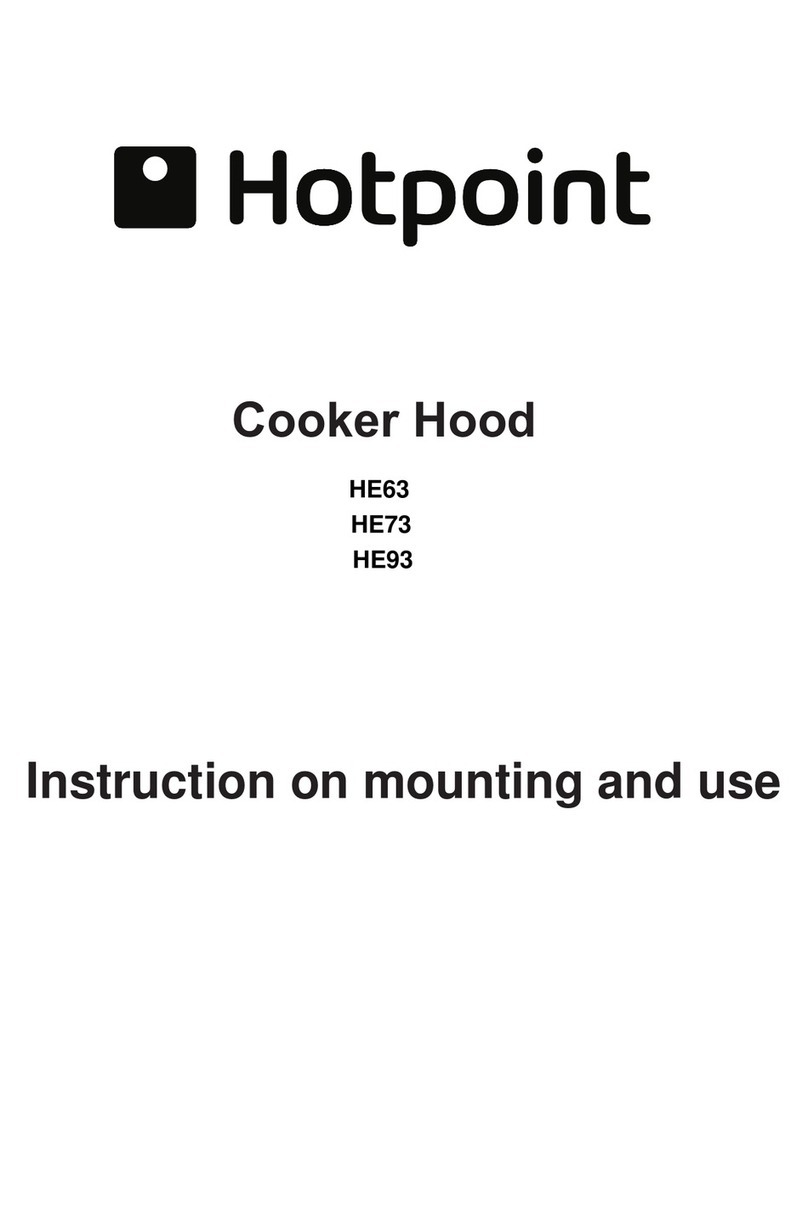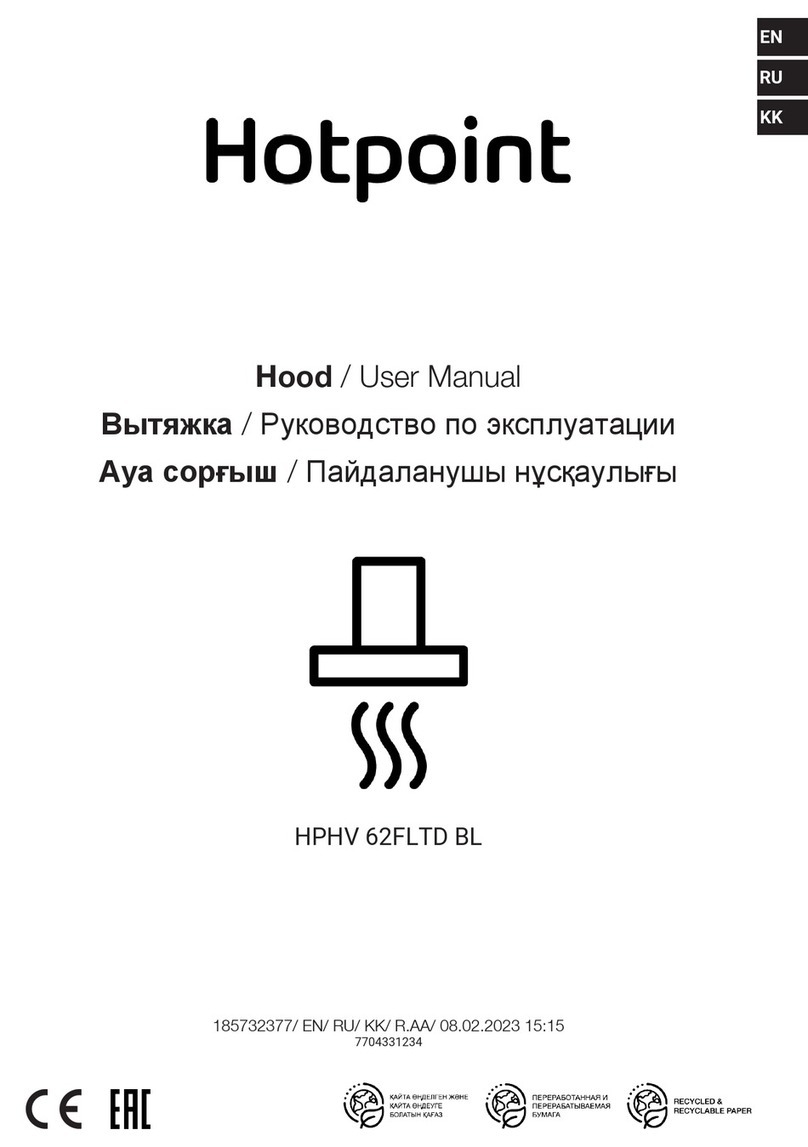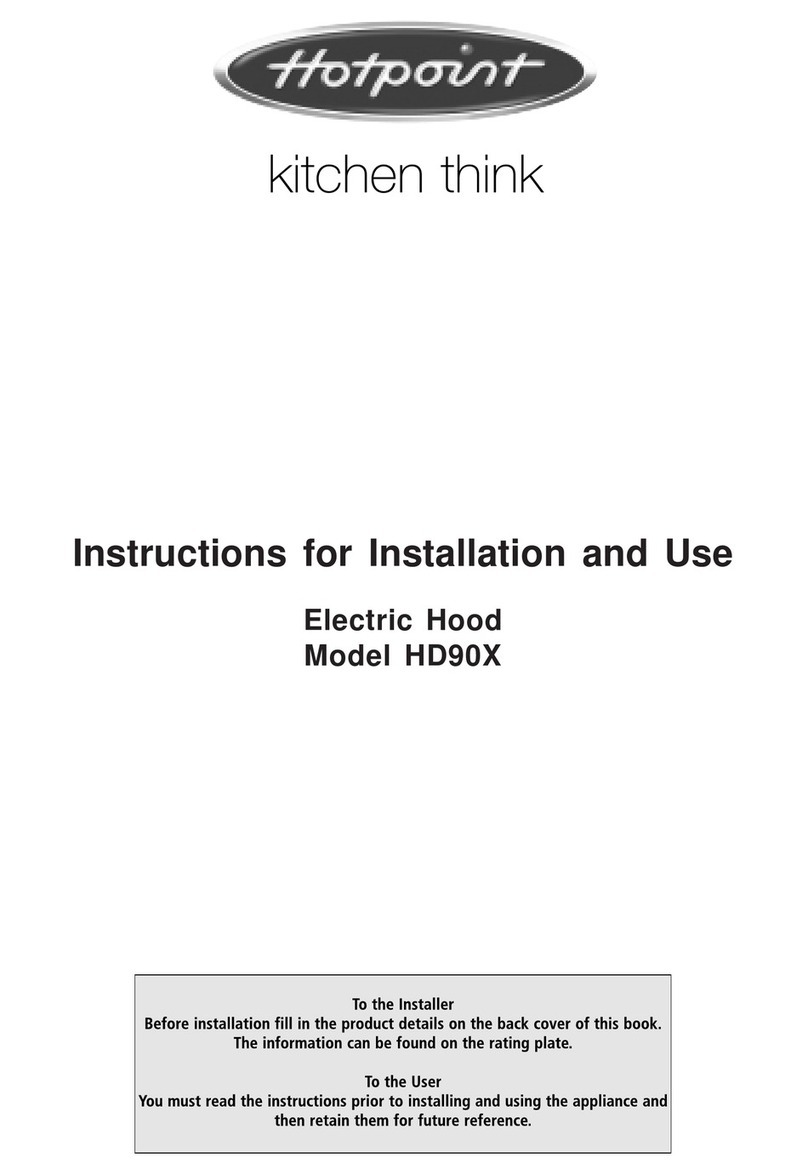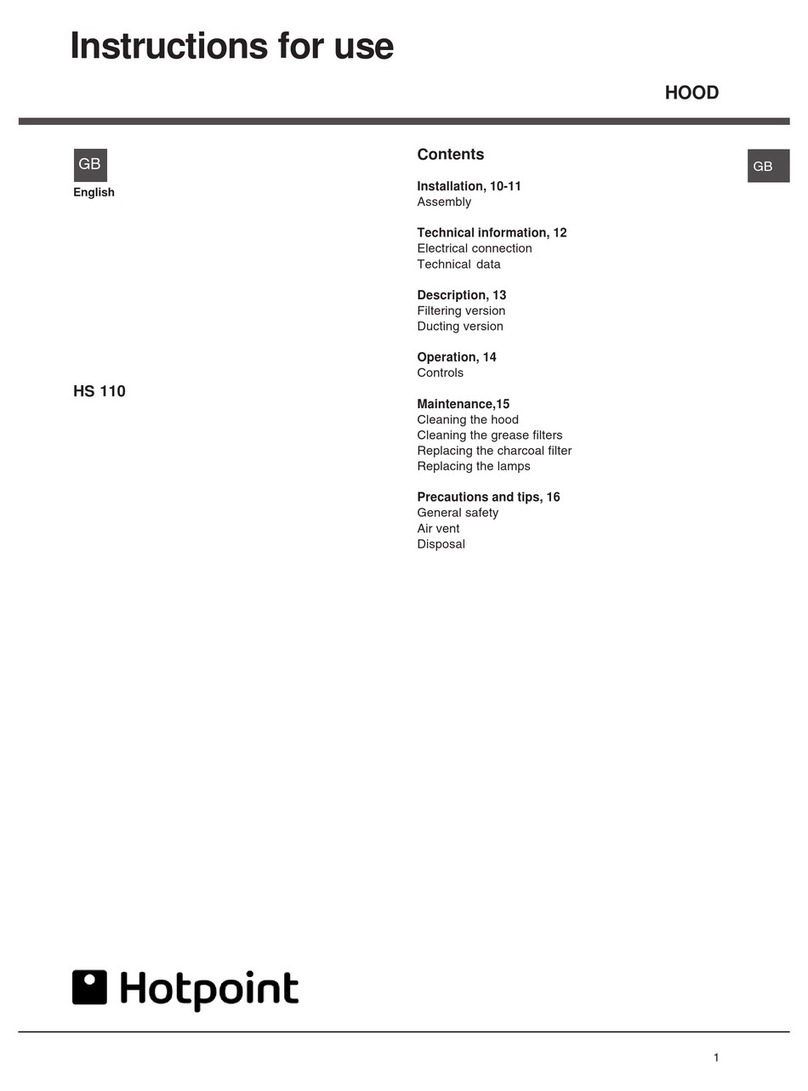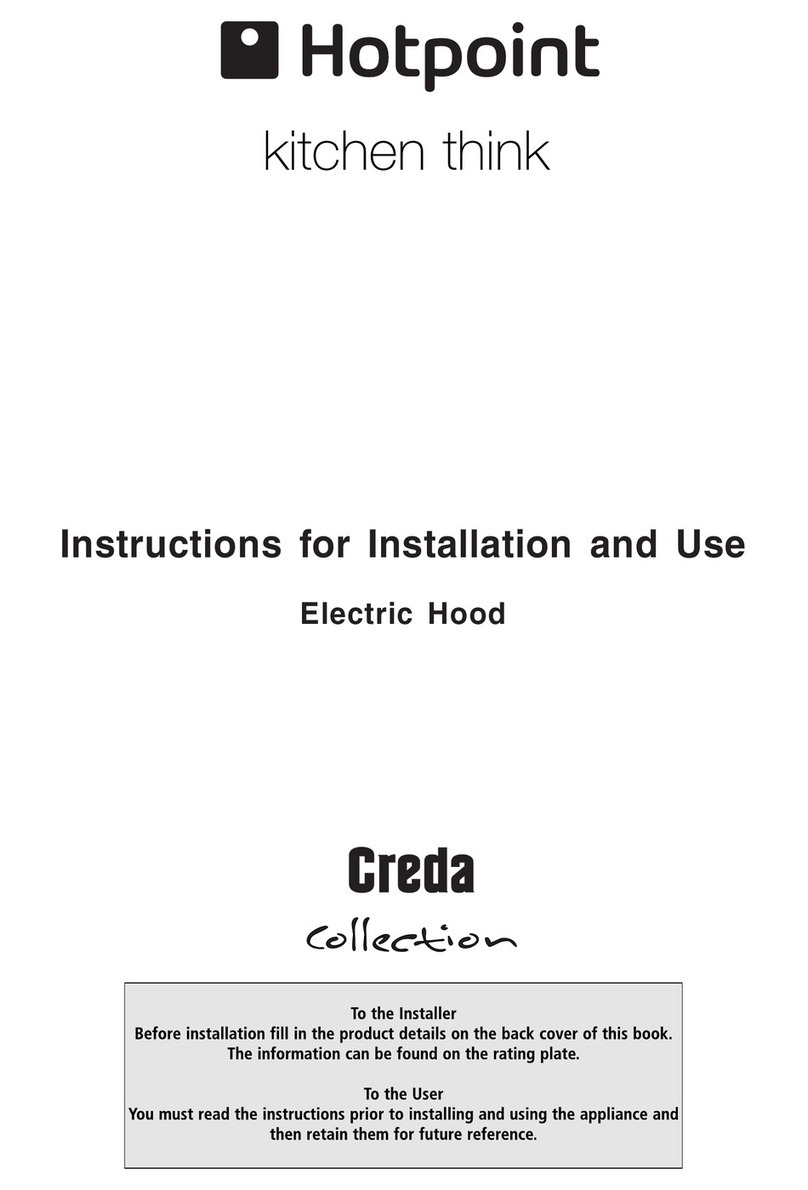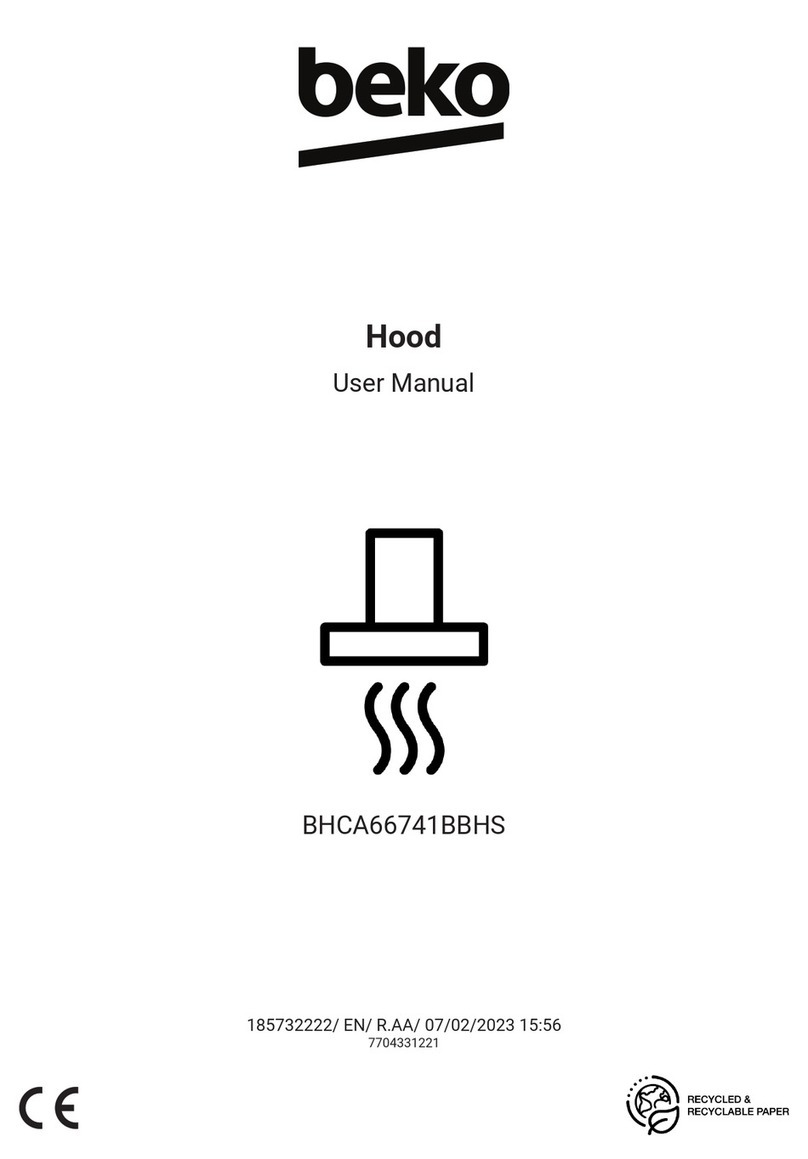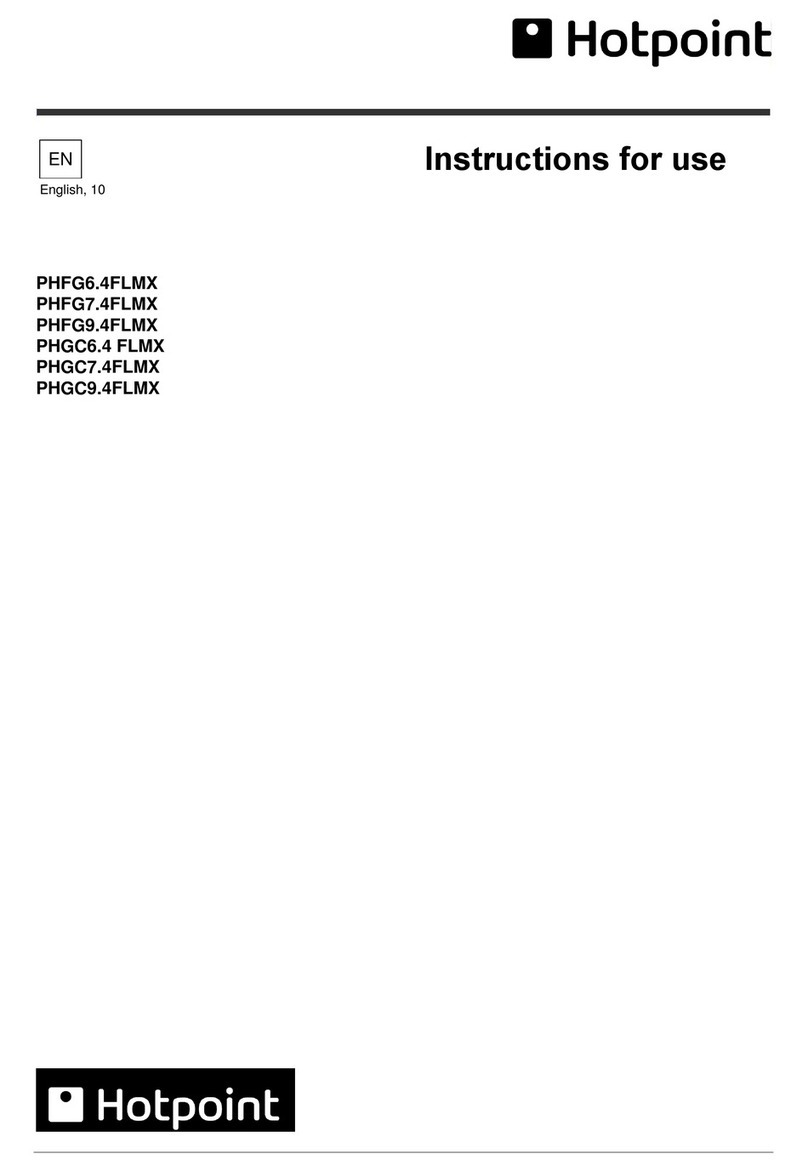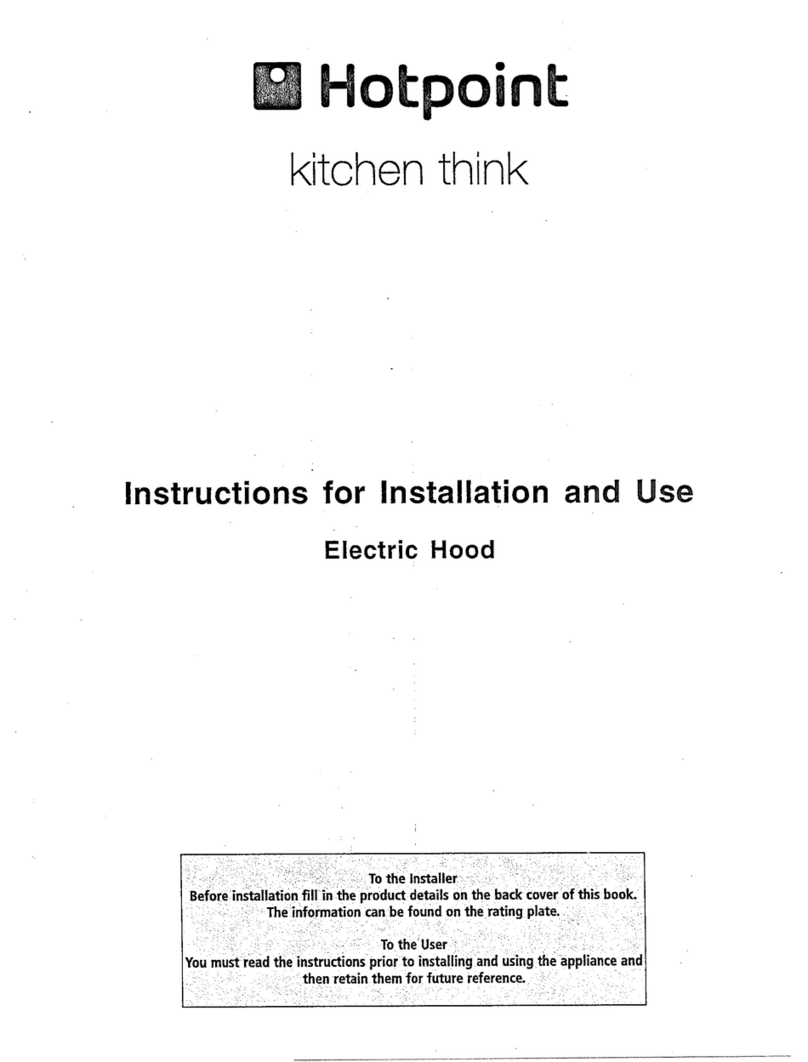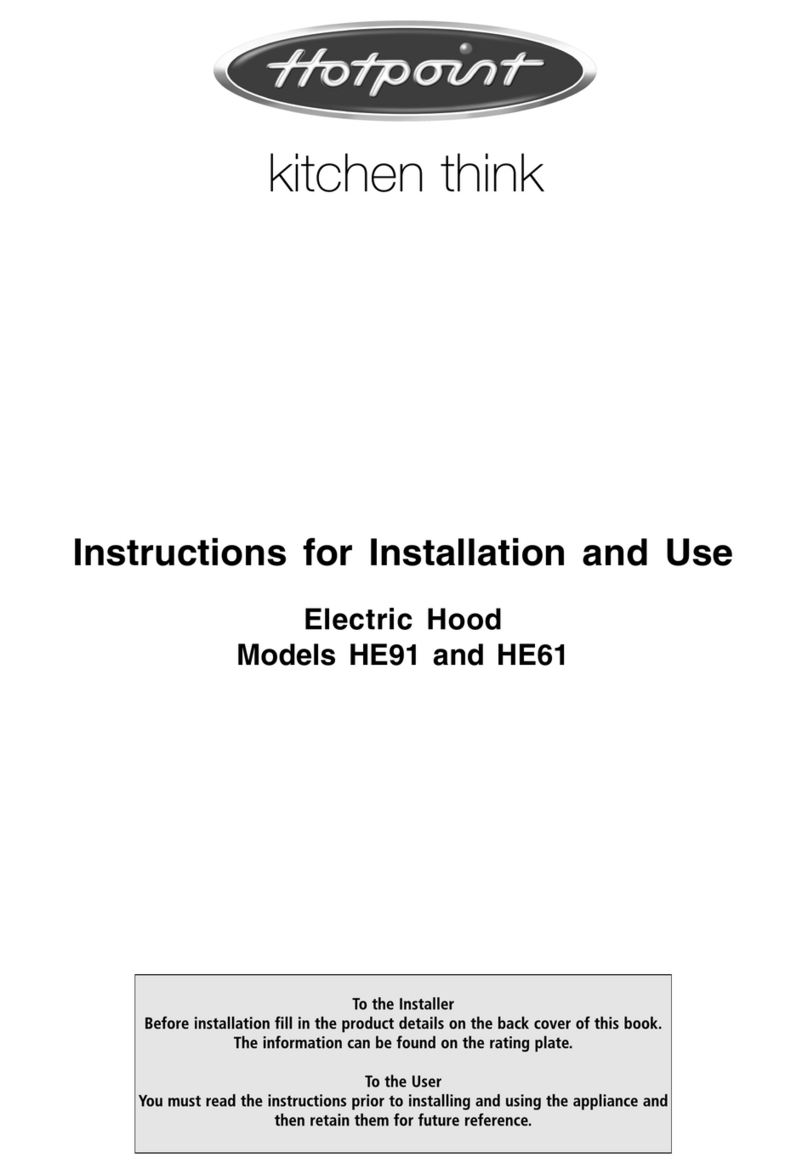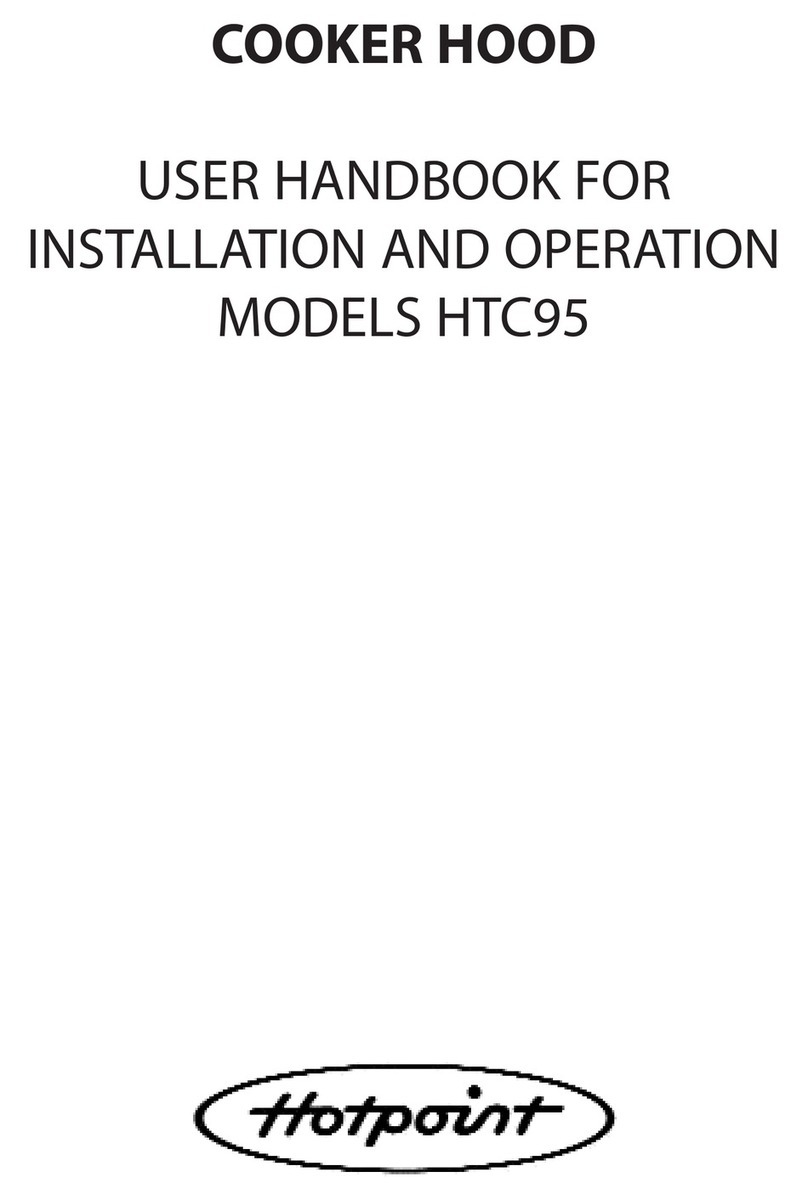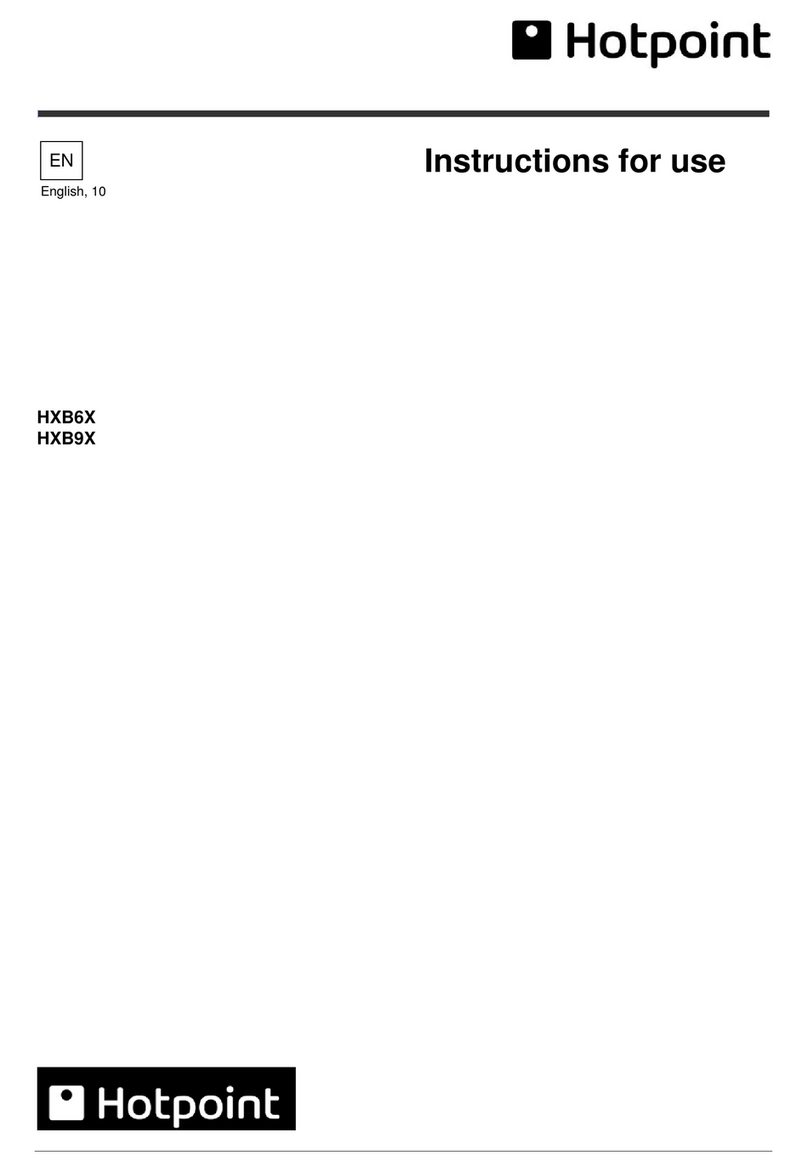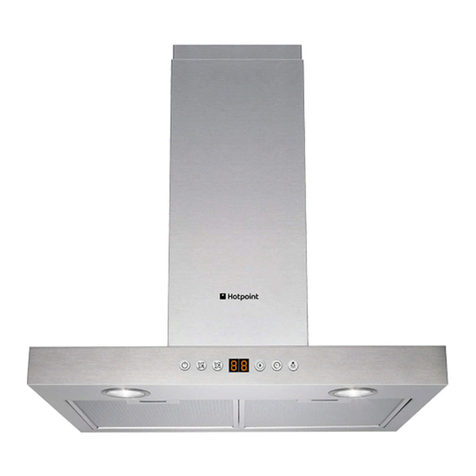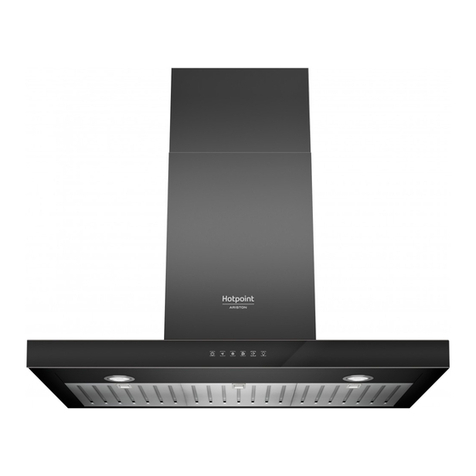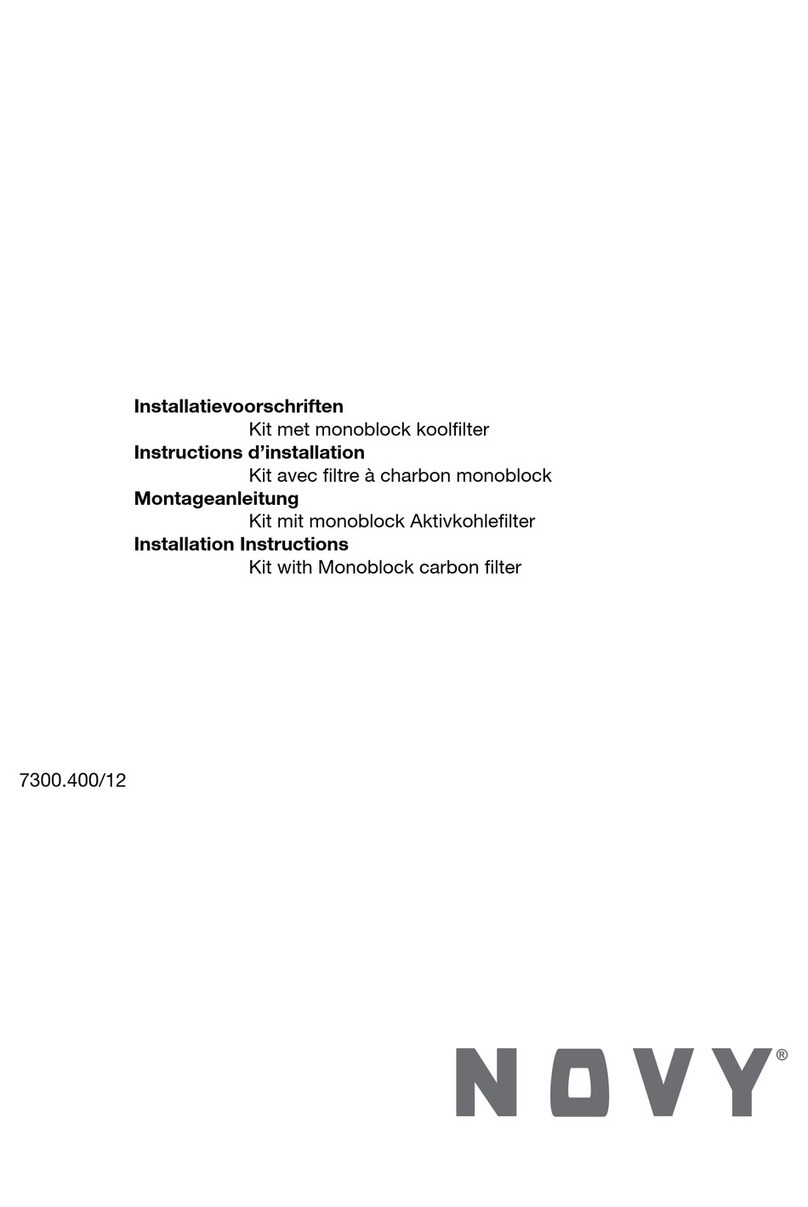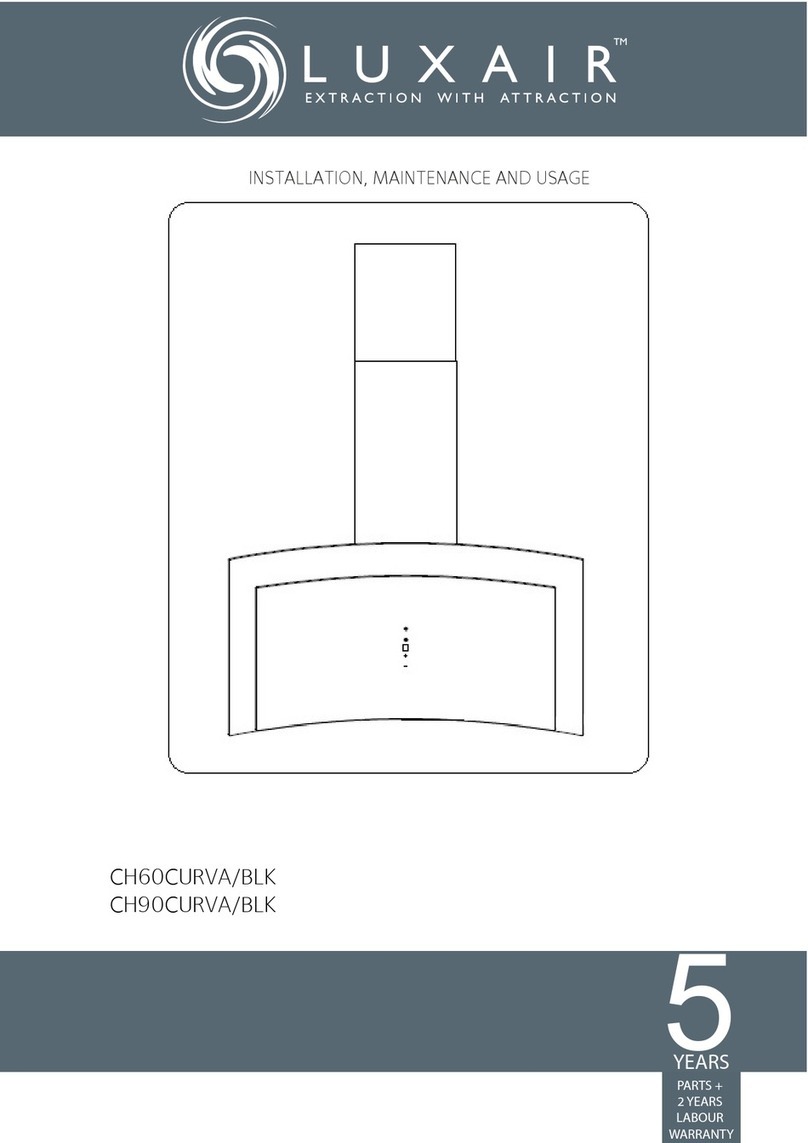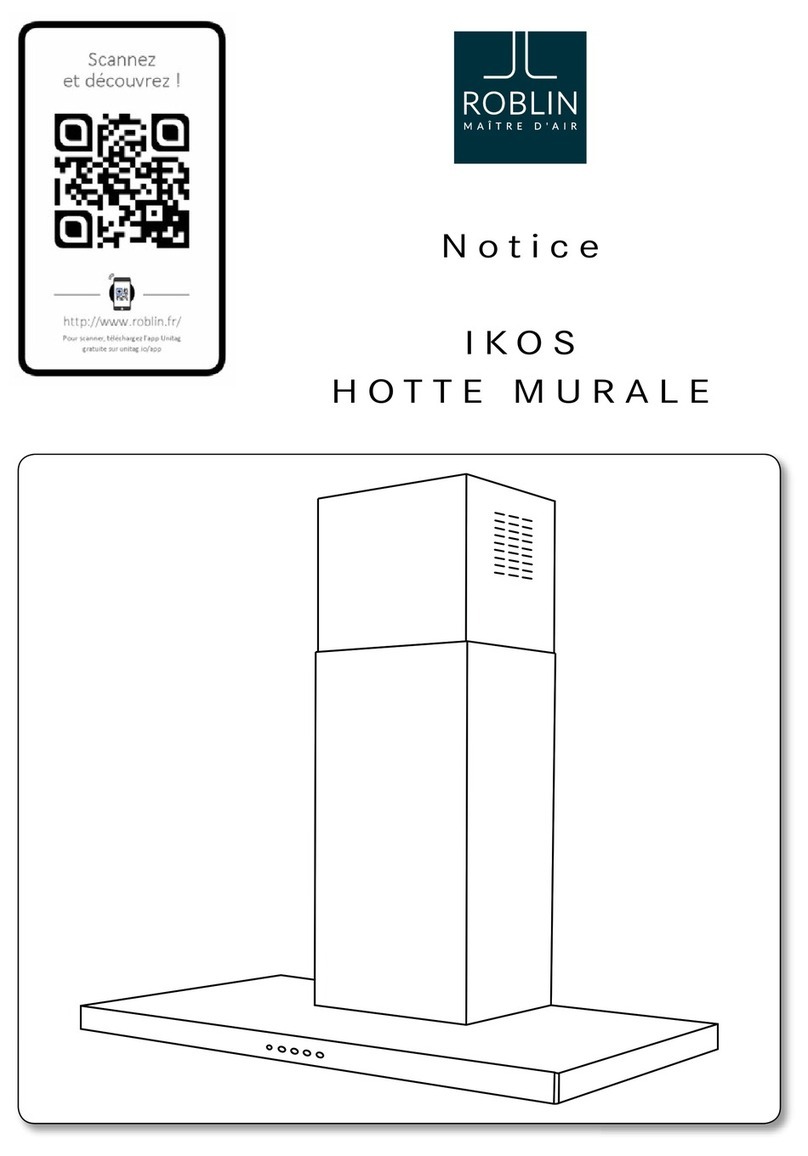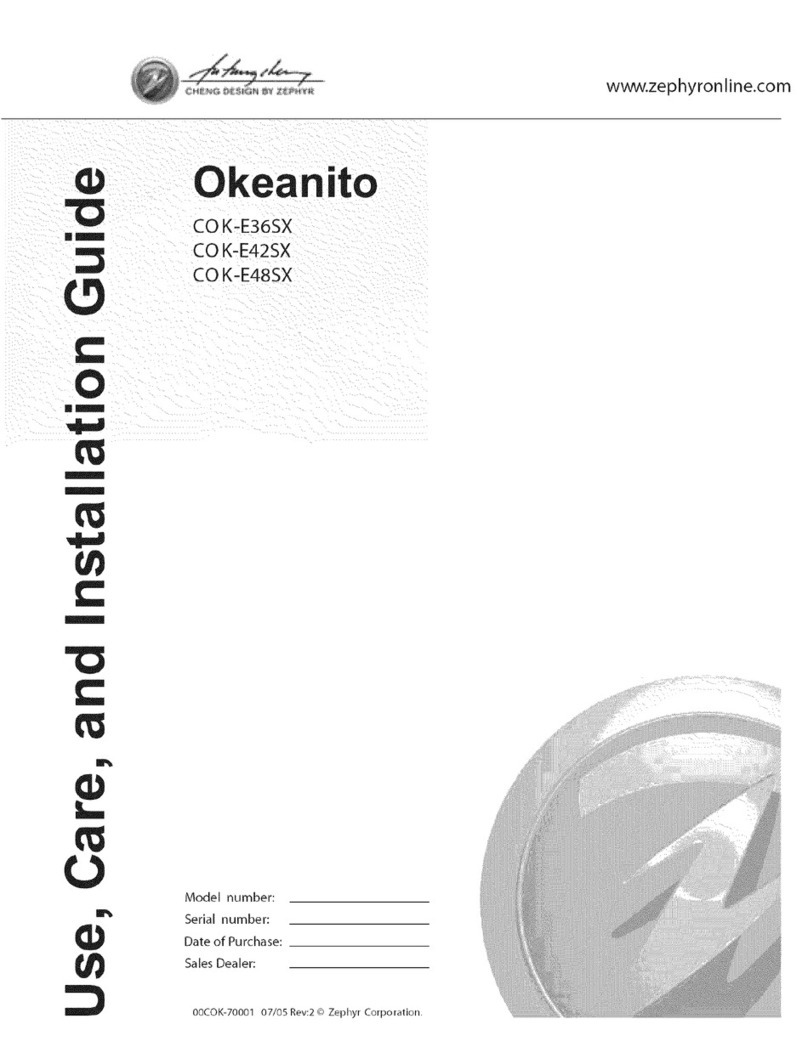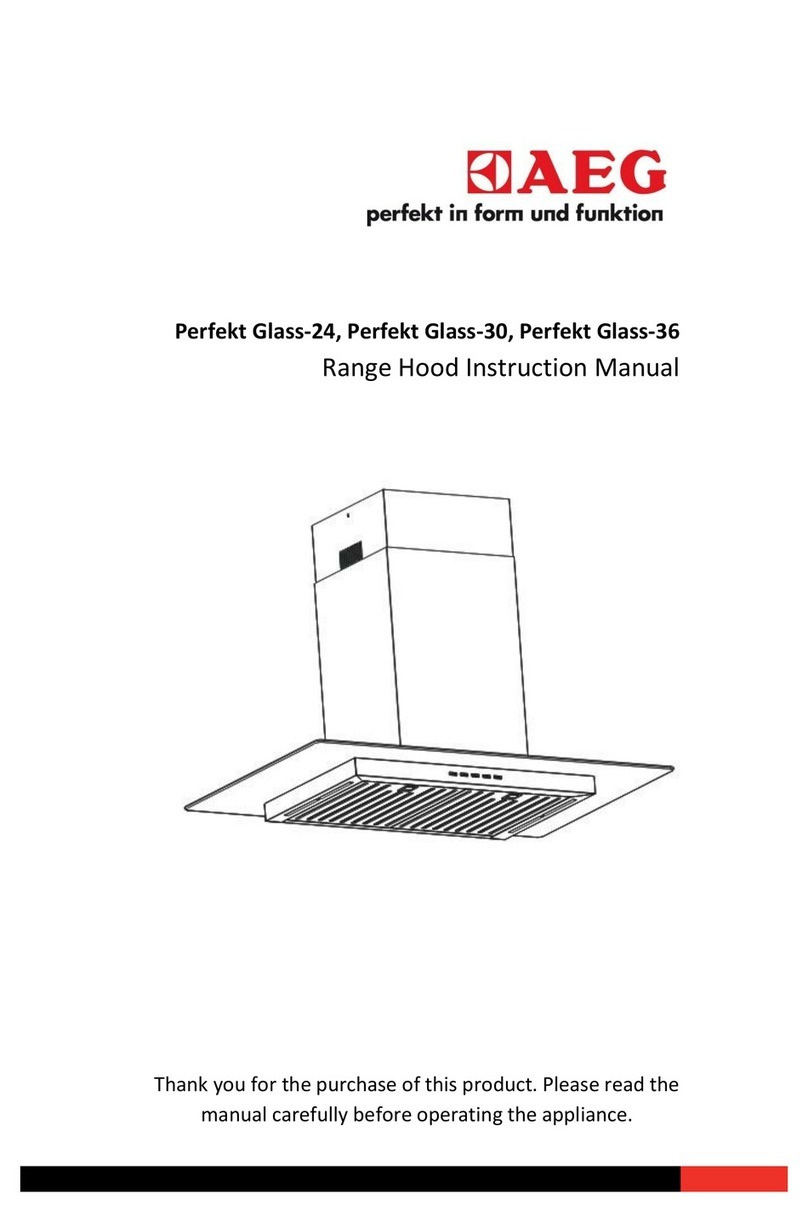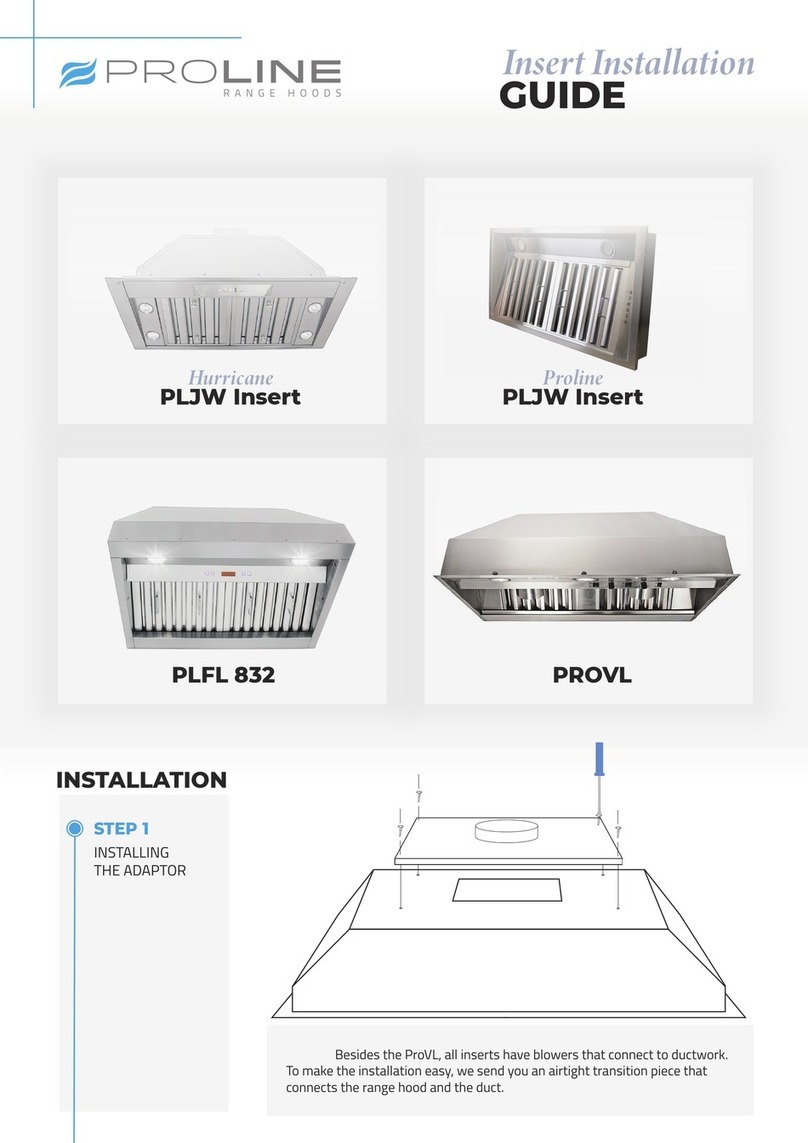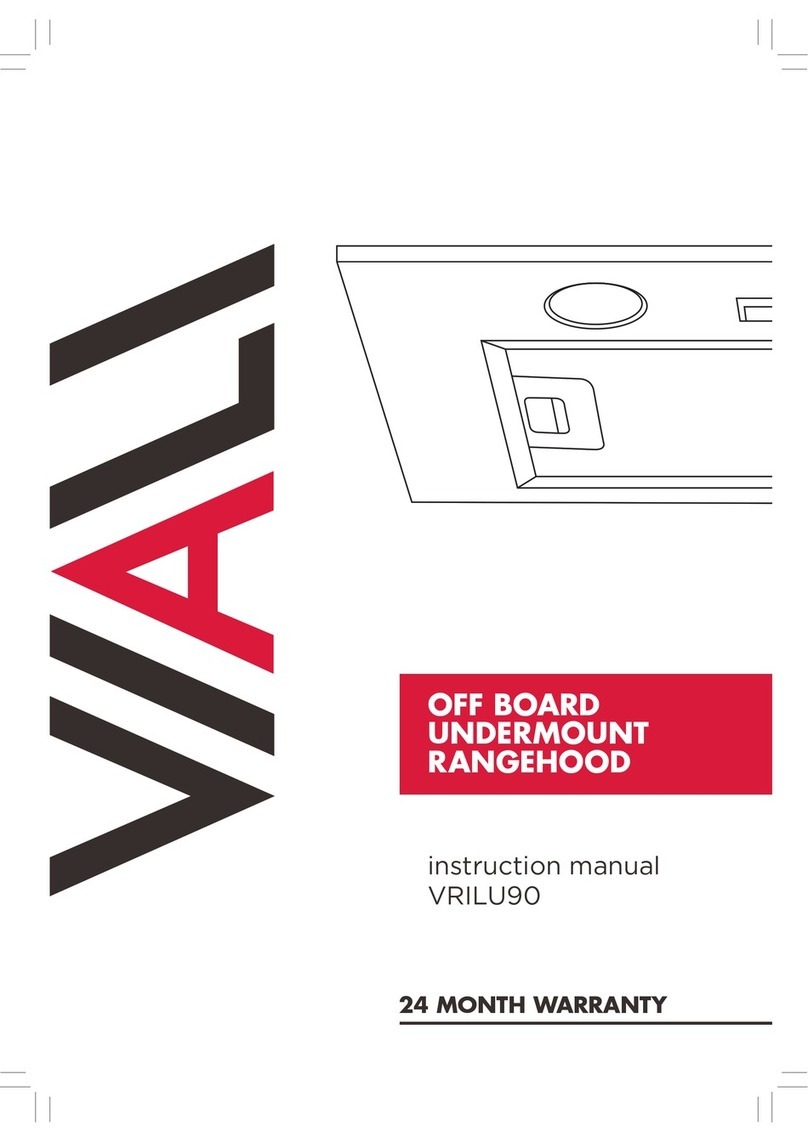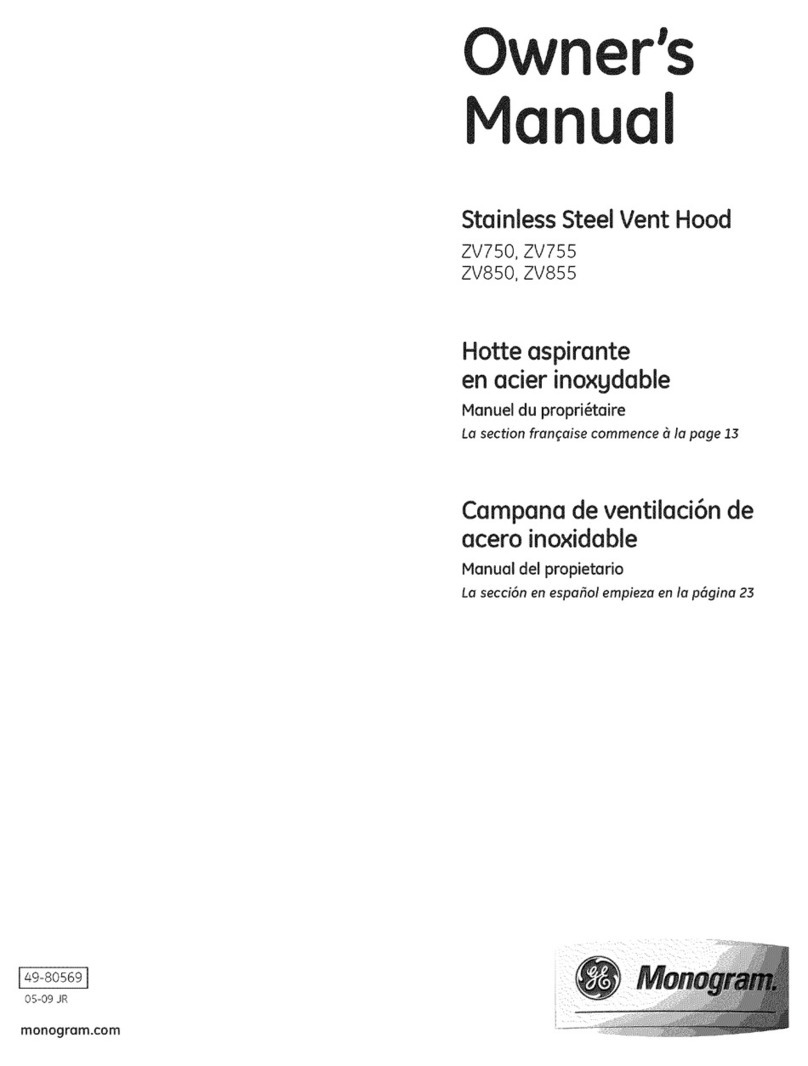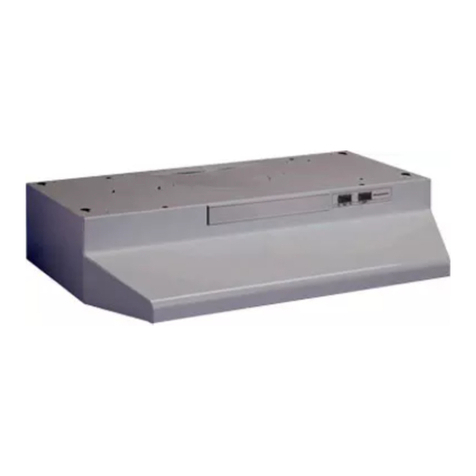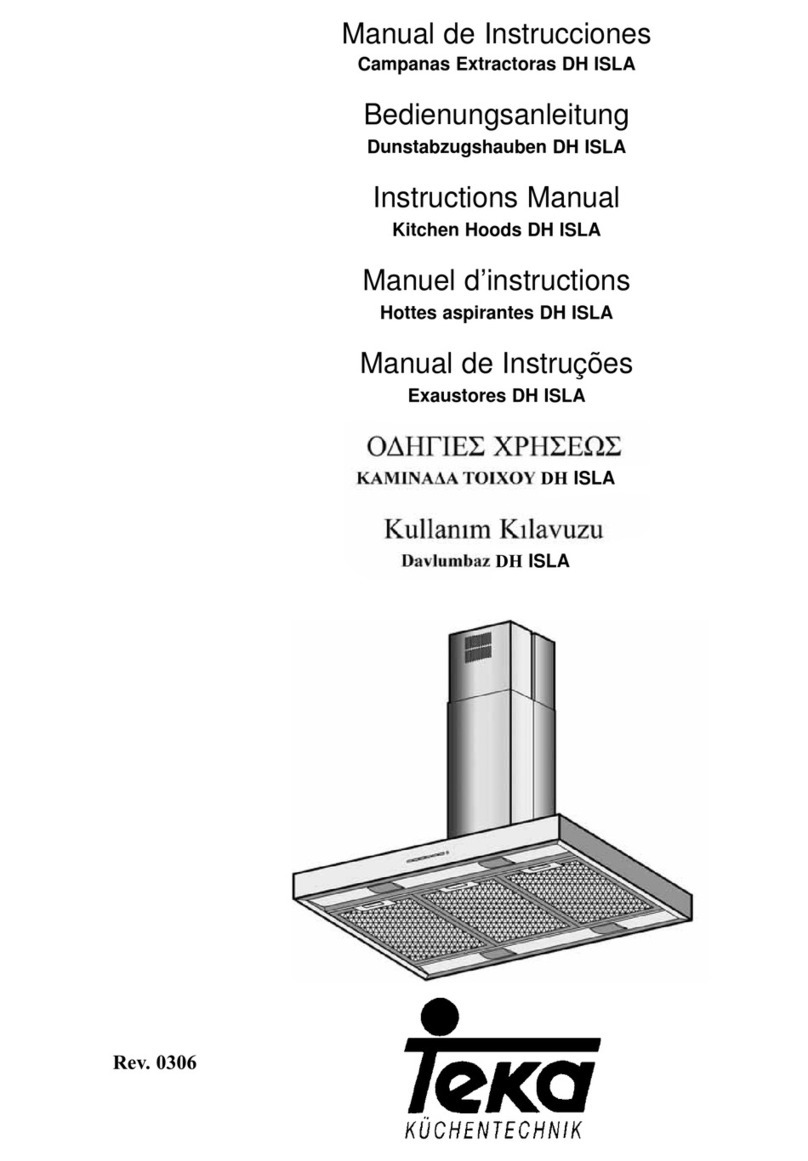Consult the designs in the front pages referenced in the text by
alphabet letters. Closely follow the instructions set out in this
manual. Merloni does not accept responsability for any damage
caused through non complying with the instructions in this manual.
The cooker hood must be placed at a minimum distance of 50 cm from
the cooking plane for electric cookers and 75cm for gas or mixed
cookers.
If the appliance is installed above a gas cooking device with installation
instructions specifying a greater clearance you must take this into
account.
The hood is equipped with a top air outlet B for discharge of fumes to
the outside (Ducting version exhaust pipe and pipe fixing clamps
not provided).
Should it not be possible to discharge cooking fumes and vapour to the
outside the hood can be used in the filter version fitting an activated
carbon filter and the deflector F
on the support (bracket) G fumes and vapours are recycled through
the top grille H by means of an exhaust pipe connected to the top air
outlet B and the connection ring mounted on the deflector F (exhaust
pipe and pipe fixing clamps not provided).
The models with no suction motor only operate in ducting mode and
must be connected to an external suction device (not supplied).
Installation - Fig. 5-6-
Preliminary information for installing the hood
Expansion wall plugs are provided to secure the hood to most types
of walls/ceilings. However a qualified technician must verify suitability
of the materials in accordance with the type of wall/ceiling. The wall/
ceiling must be strong enough to take the weight of the hood.
Do not tile, grout or silicone this appliance to the wall. Surface
mounting only.
Do not fix chimney flue to furniture or fly over shelves unless the
chimney flue can be easily removed, in case maintenance is
ever required.
Assembling the deflector (Fig. 6 - 3 parts only for filter
version):
The three parts should be fixed with 2 screws the deflector extension
is adjustable and should correspond to the width of the chimney flue
support to which it is then fixed.
During electrical connection ensure the power supply is disconnected
at the domestic main switch.
1. Adjust extension of the hood support structure as the final height
of the hood depends on this and remember that with installation
completed the hood must be at least 50 cm above the cook-top
for electric cookers and 75 cm for gas or mixed cookers.
2. a. Fix the two sections of the structure using 8 screws.
b. If the hood is provided with extensions longer than the
minimum fit the reinforcement bracket S to the frame using 4
screws.
3. Place the ceiling hole diagram directly above the cook-top (the
center of the diagram must match the center of the cook-top and
the edges must be parallel to the sides of the cook-top the side
of the diagram with the wording FRONT corresponds to the
control panel side). Prepare the electrical connection.
4. Drill as shown (6 holes for 6 wall plugs 4 plugs for fixture) screw
the outer screws leaving a space of about 1 cm. between the
screw head and the ceiling.
5. Fit an exhaust pipe inside the truss and connect it to the motor
compartment connection ring (exhaust pipe and fixing brackets
are not supplied).
6. Hook the frame onto the 4 screws (see step 4).
CAUTION! The side of the truss with connection box corresponds
to the side of the control panel with hood assembled.
7. Tighten the 4 screws.
8. Insert and tighten another 2 screws in the remaining free holes for
secure fixing.
9. Carry out the electrical connection to the mains power supply
only turn on the power supply upon completion of assembly.
10. Hook the hood onto the truss ensuring it fits properly to hook
the hood onto the truss partially tighten 4 screws (see also step
12).
11. Secure the hood to the truss using two screws; this will also help
center the two sections.
12. Tighten the 4 screws securing the truss to the hood.
13. For extractor versions (13A) connect the other end of the exhaust
pipe to the flue.
For filter versions (13F) fit deflector F to the truss and secure it
to the bracket supplied using 4 screws then connect the exhaust
pipe to the connection ring located on the deflector.
14. Fit the nuts with fixing hooks supplied inside the top and bottom
sections of the flues at the rectangular slots. A total of 10 nuts
must be fitted.
15. Join the two top sections of the flue to cover the truss so that one
of the slots on the sections is situated on the same side of the
control panel and the other on the opposite side. Screw the two
sections together with 4 screws (2 each side- see the plan
diagram for joining the two sections).
16. Fix the top flue assembly to the truss near the ceiling with two
screws (one each side).
17. Carry out electrical connection of control panel and bulbs.
Warning! Make connections taking care to insert the
connectors in the right way.
18. Join the two bottom sections of the flue covering the truss using
6 screws (3 each side see the plan diagram for joining the two
sections).
19. Insert the bottom section of the flue in its seat so that it completely
covers the motor compartment and electrical connection box
then ensure it from inside the hood using two screws.
20. Apply the 2 tabs (supplied) to cover the fixing points of the bottom
flue (CAUTION! THE BOTTOM FLUE TABS ARE THE
NARROWER AND SHALLOWER ONES).
The wider and deeper tabs are those used for the top flue and
must be cut to size.
21. Turn the mains power on again at the central electrical panel and
check for correct hood operation.
Electrical connection
The supply voltage must correspond to the voltage label inside the
cooker hood.
Where provided connect the plug directly into the main socket.
Where an electrical plug is not provided (for direct connection to
electrical network) place a standards approved bipolar switch with an
aperture distance of not less than 3mm (accessible) from the contacts.
7













